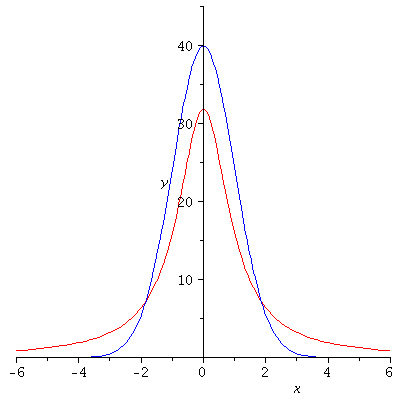MONT 106N -- Identifying Patterns
October 2, 2009
A "fat-tail" distribution
One very simple (i.e. defined by a mathematically simple formula) example of a
"fat-tail" distribution is shown here in red, together with the normal curve
in blue for comparison. The horizontal axis is measured in standard units
for the normal curve and the vertical axis is in %/standard unit, as usual.
| > |
 |
| > |
By way of comparison: The area under the normal curve (blue)
between ![]() 2 and
2 and ![]() is about 2.5%. The area under the "fat-tail"
is about 2.5%. The area under the "fat-tail"
curve between ![]() 2 and
2 and ![]() is about 9.5%
is about 9.5%
| > |